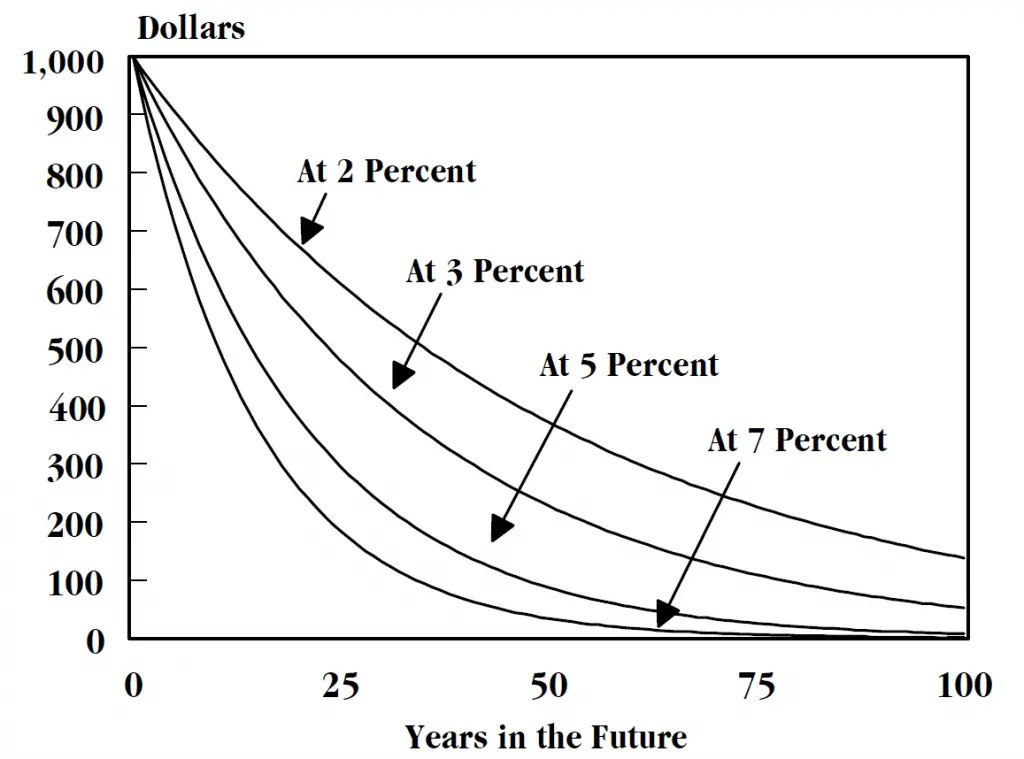The time value of money is the measurement of the benefit of getting money in the present instead of the same amount at a later time in the future. It is based on the preference of when you receive money on a time line.
화폐의 시간가치는 향후에 같은 금액 대신 현재에 돈을 받는 이익을 측정하는 것이다. 그것은 시간선에서 돈을 받을 때의 선호를 바탕으로 한다.
Time value of money is the reason interest is received. Interest is paid to the depositor on saving accounts and to a lender for debt to compensate the lenders and depositors for the time value of their money. People and businesses allocate their capital in search of returns and consider both the risks and the growth when making their decisions.
화폐의 시간가치가 이자를 받는 이유다. 예금주에게는 저축예금자에 대한 이자와 대출자에게 대출자와 예금주에게 그들의 돈의 시간가치를 보상하기 위해 빚에 대한 대출자에게 이자가 지급된다. 사람과 기업은 수익을 찾아 자본을 할당하고 결정을 내릴 때 위험과 성장을 모두 고려한다.
Investment capital is also directed in the context of(의 맥락에서) the time value of money. Traders and investors will buy investments or place trades for potential future returns instead of spending their money now if they see a high enough potential of growth to make the risk worth it.
투자자본도 화폐의 시간가치라는 맥락에서 지향한다. 만약 그들이 위험을 감수할 만큼 충분히 높은 성장 잠재력을 본다면, 트레이더와 투자자들은 그들의 돈을 지금 쓰는 대신에 투자를 사거나 잠재적인 미래 수익을 위해 거래를 할 것이다.
The present value of money is the worth of money today based on its future volume of cash flows that are at a quantified rate of return. Estimates of the probability of future cash flows are always “discounted”; the greater the discount rate, the less the current value of the cash flows in the future. Setting the correct discount rate is important in properly valuing potential future cash flows for earnings, interest, or dividends.
화폐의 현재 가치는 수량화된 수익률의 미래 현금흐름에 기초하여 오늘의 화폐가치다. 미래현금흐름의 발생가능성의 추정치는 항상 "할인"된다. 할인율이 클수록 미래현금흐름의 현재가치는 감소한다. 정확한 할인율을 설정하는 것은 수익, 이자 또는 배당금에 대한 잠재적 미래현금흐름을 적절히 평가하는 데 중요하다.
A discount rate projects the required rate of return on an investment that could make it worth the amount of risk involved being in the investment. In many situations the federal funds rate is used as the discount rate to show the comparison of an investment to risk free returns.
할인율은 투자에 수반되는 위험의 양을 가치 있게 할 수 있는 투자에 대해 요구되는 수익률을 예측한다. 많은 상황에서 연방기금금리는 무위험 수익에 대한 투자의 비교를 보여주기 위해 할인율로 사용된다
The present value of an annuity(연금) is measured by what the series of payments or receipts will be worth as projected into the future. Some examples are calculating the value of leases and rental properties on an asset based on future cash flows. The potential future value of an annuity is based on the stream of payments invested to earn a rate of interest.
연금의 현재가치는 미래에 예상되는 일련의 지급액이나 수령액으로 측정된다. 일부 예는 미래현금흐름에 기초하여 자산에 대한 리스 및 임대자산의 가치를 계산하는 것이다. 연금의 잠재적 미래 가치는 이자율을 얻기 위해 투자한 지급의 흐름에 기초한다.
The future value is the projected value of an investment, asset, or cash at a specified date in the future. This is measured based on the value of that asset in contrast with the expected value of appreciation (인지 평가)compounded into the future.
미래가치란 미래에 특정일에 투자자산이나 현금의 추정가치를 말한다. 이는 미래에로의 복합되어지는 평가의 기대가치 비교하여 자산의 가치에 기초하여 측정한다.
The time value of money formula projects the future value of money by calculating a current amount of money and the number of years that it can compound at the current interest rate or rate of return.
화폐의 시간가치는 현재 화폐의 금액과 현재 이자율이나 수익률로 혼합할 수 있는 연수를 계산하여 화폐의 미래 가치를 예측한다.
The time value of money formula is:
화폐 공식의 시간가치는 다음과 같다.
FV = PV x [ 1 + (i / n) ] (n x t)
- FV = Future value of money(FV = 돈의 미래가치)
- PV = Present value of money(PV = 돈의 현재 가치)
- i = interest rate(= 이자율)
- n = number of compounding periods per year(n = 연간 복합 기간 수)
- t = number of years(t = 년 수)
One of the biggest filters to calculate the destruction of the value of money into the future is the current rate of inflation on a currency.
미래 화폐가치의 파괴를 계산하는 가장 큰 필터 중 하나는 통화의 현재 인플레이션율이다.

The present value of $1,000, 100 years into the future. Curves represent constant discount rates of 2%, 3%, 5%, and 7%.
Congressional Budget Office (Congress of the United States)